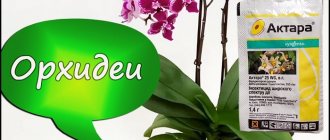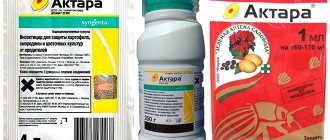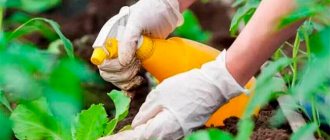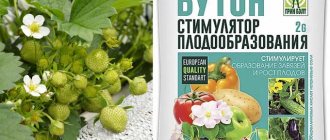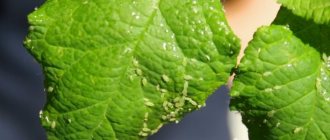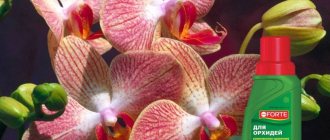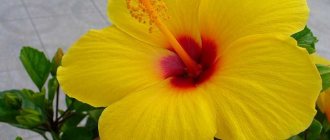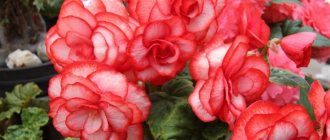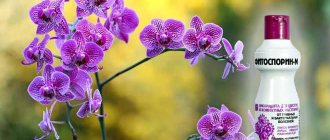Home / Preparations and fertilizers
Back
Published: 06/18/2019
0
3.9/5 — (19 votes)
Aktara is one of the most popular and widespread insecticides among gardeners and gardeners. A wide range of applications and proven effectiveness against most pests are the undoubted advantages of the drug. Like any chemical, Aktara has limitations that should be considered before use.
- 1 Composition and principle of action
- 2 Scope of application
- 3 Advantages and disadvantages
- 4 Release forms
- 5 Security measures
- 6 How to prepare a solution
- 7 Use for different types of crops
- 8 Processing of seedlings
- 9 Compatibility of Aktar with other drugs
- 10 Actions in case of poisoning
- 11 Reviews
Composition and principle of action
The active ingredient of the drug is thiamethoxam. In small doses, the synthetic compound causes stimulation of the nervous system of pests. Significant concentration leads to paralysis. Aktara belongs to the group of contact-intestinal insecticides. The substance is absorbed into the plant tissue, along with the cell sap enters the gastrointestinal tract of the insect and provokes its death. Pests with thin cover die after contact with the drug. Actara's effect does not apply to eggs, pupae and larvae.
The insecticide is used in 2 ways: spraying the ground parts of garden, vegetable and indoor crops and watering at the roots. In the first case, the solution is absorbed by the shoots in a matter of minutes. When applied to the soil, it takes several hours for the active substance to be distributed throughout all the vascular tissues of the plant. For fruit trees, this time is on average 1-3 days; for low-growing crops, 2-3 hours are enough.
Thiamethoxam mainly accumulates in plant leaves; its concentration in fruits is insignificant. The protective function of the drug lasts for 2-3 weeks after foliar treatment and 2.5-3 months after watering the soil.
Precautionary measures
This chemical belongs to hazard class 3 and is moderately dangerous.
The drug kills not only harmful, but also beneficial insects, in particular bees. Therefore, Aktar is not used during the flowering period of garden and vegetable crops. Also, be careful when spraying the drug near water bodies so as not to harm aquatic life.
When treating plants with Aktara, some protective measures should be taken:
- children and pets must be removed from the work site;
- When spraying, you must use personal protective equipment;
- from the moment of dilution of the Aktara working fluid and until the end of the treatment, it is prohibited to eat, drink or smoke;
- Make sure that the product does not get on the skin or inside. If signs of illness appear, you should contact the clinic;
- carry out treatment for 2.5-3 hours.
Important!
The remains of the Aktara solution prepared for treatment cannot be stored; they are disposed of along with household waste. Do not pour into a sewer or pond.
Compatibility of Aktara with other products This drug is compatible with other insecticidal and fungicidal agents. There is no data on the incompatibility of Aktara with growth stimulants.
Scope of application
The insecticide packaging shows a close-up picture of the Colorado potato beetle, a well-known enemy of potato beds. Despite this, the spectrum of action of the chemical is much wider. Aktara is used in the fight against aphids, whiteflies, thrips, scale insects and many other harmful insects. The effectiveness of protection against onion flies, cabbage flea beetles, and apple moths has been proven. Dangerous pests are controlled in several ways:
- spraying over the entire surface of the above-ground parts of plants;
- application to the soil in beds and in bowls with potted plants;
- soaking the roots of vegetable seedlings;
- treatment of tubers before planting in the ground.
Advantages and disadvantages
The insecticide is deservedly popular among gardeners. Aktara's strengths include:
- The speed with which the drug affects pests. Insects eat poisoned leaves and receive a lethal dose of a toxic substance, which within half an hour provokes paralysis, subsequently leading to death.
- Effective against a wide group of pests, including insects that parasitize the back side of foliage.
- Absence of the unpleasant odor characteristic of most insecticides in dissolved form. For this reason, Aktar can be used in residential areas to treat indoor plants.
- Weather resistant. Efficiency does not decrease in heat and under the influence of ultraviolet radiation. After absorption, the drug is not washed off by precipitation.
- Safety for humans if precautions are taken.
- Toxic substances are not concentrated in the fruits of treated crops; therefore, hygienic safety is not compromised.
- Compatibility with other drugs aimed at protecting against harmful insects, fungal diseases, stimulating plant growth.
Release forms
The development of the drug belongs to the Swiss company Syngenta. In the Russian Federation, Aktara is produced under license. There are several forms of release on sale:
- water-dispersible granules (WDG) packaged in 1.4 g, 4 g and 250 g;
- liquid suspension in ampoules of 1.2 ml and polymer bottles of 9 ml and 1 l.
As a rule, one package of the minimum quantity is enough for processing garden and vegetable beds on individual farms and for use at home to protect indoor flowers. Large packaging is intended for the use of insecticide on an industrial scale.
Stable demand and high cost of Aktara have given rise to a market for counterfeit drugs. To protect yourself from unscrupulous manufacturers, you should know the characteristic features of the original drug:
- the hologram applied to the packaging has a denser structure and is completely separated from the surface;
- the Syngenta logo is visible in the center of the hologram; if you change the viewing angle, the Aktara inscription appears;
- The original packaging contains state registration numbers and container labels (for those licensed in the Russian Federation).
In Russia you can purchase registered analogues of the insecticide, which also contain thiamethoxam: Tiara, Eforia, Doctor Cruiser and Adamant.
The shelf life of granules is 4 years, ampoules - 12 months. The chemical is stored in a sealed condition at a temperature range of 10°C to 35°C, out of the reach of children and pets.
How to deal with thrips on indoor plants?
Fighting thrips is not an easy task, as they are insidious pests. To get rid of them at home, you need to use effective control methods, which are a set of actions.
COMBAT MEASURES
- If thrips are found, trim off all buds and flowers, especially on a flowering plant.
- Carefully move the plant away from the rest of the flowers and carefully inspect the entire home collection. Wash the place where the affected plant was located (window sill, window, outer sides of pots) with a soap-alcohol solution.
- Replace the top layer of substrate.
- Before treating with the drug, first wash the plant in the shower or with a cotton swab, cloth or soft toothbrush with a solution of water and methyl alcohol (1:1), soap solution or tobacco infusion to wash off the thrips.
- Rinse off the solution and leave the plant to dry. After the water has evaporated from the leaves, we spray the plant, the top layer of soil and water the soil with a systemic insecticide as one of the stages of thrips development takes place in the soil.
- Ventilate the room well.
ADVIСE. Unfortunately, rinsing in a hot shower does not kill thrips.
Types of plants whose leaves cannot be washed must be sprayed, preferably with preparations.
With the help of these recommendations, treatment of indoor plants is more successful. These methods of combating thrips have helped many gardeners and saved many indoor flowers.
.
Thrips larvae and adults
.
Security measures
Aktara belongs to low-toxic drugs of class 3 hazard for humans and mammals. To completely eliminate the risk of poisoning and burns, you must strictly adhere to the instructions and follow certain technology:
- when working with the substance, use gloves, a mask or a special respirator;
- manipulations with the insecticide are carried out in an open space; when working in a living room, a window is opened;
- refrain from drinking water, food and smoking at the time of contact with the drug;
- after use, burn the container of the used solution;
- After finishing all the work, wash your hands thoroughly and rinse your face.
How to prepare the solution
Aktara is easily soluble in water, but to prepare a working solution from dry granules, some nuances should be taken into account:
- pre-prepare containers for mixing the required volume and check the serviceability of the sprayer;
- the prepared solution cannot be stored, so the required amount of granules is immediately measured, which depends on the crop being treated;
- the contents of the package are diluted in a small amount of water (temperature not lower than 25 °C);
- shake thoroughly until the liquid structure is homogeneous;
- add the solution to the required volume, mix again;
- Liquid Aktara in ampoules is prepared according to a similar principle.
After these manipulations, the drug is ready for use. Plants should be sprayed in cloudy (but not rainy) weather. When the need to treat against a pest does not allow you to hesitate, and there is a likelihood of precipitation, you should spray the plants no later than an hour before the rain. On sunny days, early morning or after sunset is suitable for processing.
Insecticide Syngenta "Aktara" - reviews
Yulia_Ru
https://irecommend.ru/content/pomoglo-izbavitsya-ot-shchitovki-na-rasteniyakh
I learned about the drug “Aktara” from the Internet after an unpleasant parasite called scale insects appeared on my plants (at that time there were two of them, a small lemon and a Murraya). Before I bought Aktara, I tried to fight the scourge with folk remedies - I regularly washed off the nasty scales with water, using a cotton pad, sprayed the plants with garlic infusion, and rubbed them with alcohol. But none of this helped me - the insects appeared again. In addition, the spreading Murraya with a huge number of leaves was very inconvenient to process so as not to miss a single leaf.
Realizing that I couldn’t get by with homemade methods, I still bought a bottle of Aktara at a gardening store.
The packaging is small, but the consumption of the product is very economical - only 1 ml per 1 liter of water if you spray the crown of a plant. The product itself is reminiscent of Baileys in color and thickness, a thick caramel-colored liquid with a sweetish smell. Despite such attractive associations, eating this poison is, of course, strictly prohibited.
First you need to dissolve the required volume of Aktara in a small amount of water, and then stir this solution in a large volume. This is done to ensure that the product dissolves evenly. By the way, the kit includes a measuring cup with milliliter divisions so that you are sure not to make a mistake in the dosage.
I diluted the product in a five-liter basin (accordingly, I used 5 ml), placed the pot with the plant next to it in the bath and started bathing: I immersed the branches in the solution, wiped it with a dampened cloth, put it in a spray bottle and sprayed. It is better that the water does not get on the ground and roots, so that the green patient does not have an overdose of poison. Aktara can also be used for watering; in this case, you need to prepare a less concentrated solution, approximately halving the dose of the product. But I limited myself to treating the crown.
Several days passed, and what did I notice? Once again examining the Murraya, I touched its branches, and dead scale insects fell from the leaves like sand. I was delighted and gave the tree a “shake-up”. The remaining parasites were removed with a cotton pad. Lemon also got rid of unwanted tenants.
As written in the instructions, after about two weeks I repeated the treatment. And since then scale insects have not bothered us.
About side effects. Murraya has not changed at all, but she is strong for me, even with parasites she grew by leaps and bounds, well done. And after all these manipulations, the lemon became coarse and yellowed, but as soon as I finished processing and “relieved stress” from the plant with complex fertilizer, it produced a new large sprout. And now it sheds the rough leaves, leaving only new, green ones.
My opinion is that the remedy turned out to be effective, but as with any poison, it is important to follow the dosage and not poison the plants beyond measure.
Advantages:
- easy to use
- effective
shmonstr
https://irecommend.ru/content/samyi-nadezhnyi-pomoshchnik
Somehow my favorite plants were infected with scale insects. They stood on the balcony. There were so many scale insects that all the glass was covered in the sticky syrup of these small pests. The problem with fighting scale insects is that it is useless to wash the plants with anything. Insects are perfectly protected. The solution is to poison the plants so that their juice poisons the insect. The result is in a few days. And he didn’t keep himself waiting. The insects were really dead; they just had to be removed from the plant for aesthetic beauty. The beauty of this drug is that it is convenient to use - a 4g sachet is diluted in 5l of water. But I have 2 liter bottles for watering flowers. And nothing - not a single plant was harmed! Even the violet babies tolerated the double treatment quite well. But in the fall, flies appeared in the flowers on the balcony, and when, with the cold weather, I brought the pots into the rooms (I have about 70 pots in total), all these flies began to fly around the apartment. I thought my father-in-law would beat me, because... at night, when he was sitting in a dark room, these infections, like in our room, flew in front of the monitor. I watered it with Actara, and within a week all these annoying bugs disappeared!!!! There is no more reliable and safer chemical for combating earth flies and scale insects, as well as mealybugs. By the way, I recommend buying only 4g bags with a hologram that changes the pattern, because... everything else could be fake!
Advantages:
- easy to use
- effective
Mammari
https://irecommend.ru/content/pomogaet-ot-zemlyanykh-mushek-v-komnatnykh-tsvetakh
These earth flies, settling in the top layer of soil in pots of indoor plants, are probably familiar to many. Small, winged, gray-black insects that lay eggs in the ground, which hatch into white worms that feed on organic matter in the soil.
Previously, I used various means against them, but this fall there were so many of them that I decided to find something radical. Actara became such a radical remedy for me.
The bag contained a plastic capsule with thick, opaque yellowish contents. According to the recommendation, the diluted solution would have been too much for me, so I decided to squeeze out half of the aktar and dilute it in a five-liter bucket of water. But it was not there. the product turned out to be so thick that it did not want to be squeezed out of the capsule. I took aktar for the first time, maybe I came across some that were not stored correctly, but it seems to me that everything that is packaged in capsules should be fluid. The only thing I could do was cut the capsule at the seams and wash away its adherent contents in water. In the end, it turned out that the solution was more concentrated than according to the instructions (I did not increase the amount of water, otherwise I would have just had to pour half the solution down the drain).
I poured this solution over all the pots with plants until they were completely soaked (the water came out into the pan). None of the plants were harmed; the flowers did not react at all to the actara (ordinary indoor flowers, garden annuals growing in pots, and tropical plants). But the flies disappeared!!! Literally on the 3-4th day everything was clean. And still they have not appeared, although several months have passed.
Aktara is a systemic drug; it penetrates plant juices and makes them toxic. Therefore, you should not use plants for medicinal purposes (aloe or collision, for example) within a month after using actara. In general, there was no strong smell from it. I was very pleased with this experience.
Advantages:
- has a systemic effect
- effective
Forceir
https://otzyv.expert/uboy-do-pridela-618083
Advantages:
- Full spectrum availability
Flaws:
- There are not many of them and they are not so significant
Details
When a scourge like the Colorado potato beetle appears in an area where potatoes grow, we begin to think about what to use to destroy it or at least reduce its number in the first couple of years. And then we get our hands on a wonderful and effective drug from Syngenta, the insecticide “Aktara”. A drug based on the active ingredient thiomethoxam. The insecticide is quite effective if used in recommended doses, but it is quite toxic to humans (hazard class 2) and suggests that it is necessary to use protective equipment for both the skin and the respiratory tract. The drug has the form of a wettable powder and is quite dusty when preparing the working solution, be careful and do not use it in windy weather. The effectiveness of the drug is almost 100% against the Colorado potato beetle, but remember that the insecticide must be used when there is a larva of 2-3 instars, sunny weather without precipitation and a temperature of no more than +25.
Let's summarize. The drug has the following advantages:
- The consumption rate of the drug is quite small.
- Easy to prepare working solution, wettable powder.
- Relatively not expensive.
- It is effective against the Colorado potato beetle, although it does not have a knockdown effect, but has a systemic effect, remaining in the plant tissue for a long time, which contributes to long-term protection.
- One treatment is enough.
- Since the new formulation is not resistant to this pest.
- Available commercially.
- The insecticide can also be used to control other pests - an expanded range of applications.
However, there are also disadvantages to this drug that have been discovered:
- Wettable powder produces dust when preparing the working solution.
- Hazard class 2.
Since the drug is systemic and remains in the tissues of the plant, it does not make the drug bad and harmful, since before harvesting the drug decomposes and no residues are found in the tubers themselves. I checked it personally. I recommend it for use, but it’s up to everyone to decide.
Whildrewing
https://otzyv.expert/deshevo-i-serdito-665661
Advantages:
- Harvest preservation
Flaws:
- Agricultural chemistry
Details
I have heard about Aktara more than once from my neighbors in the country. They used this Swiss drug on potatoes against the Colorado potato beetle and on fruit bushes and trees against pests.
I went to a store that sells gardening supplies and bought several bags of Aktara in early spring to use in the summer.
And the seller told me to soak the planting potatoes in Aktara’s solution before planting.
I did so. I dissolved it according to the instructions, kept the prepared planting material in the solution for a while and planted it in the ground.
Indeed, my potatoes were almost not damaged by the Colorado potato beetle.
Before flowering, I sprayed the potatoes again for prevention and that’s it!
My harvest was saved.
Reter
https://otzyv.expert/otlichno-deystvuet-899047
Advantages:
- valid
Flaws:
- chemistry
Details
Aktara is a good and strong remedy against pests. It destroys various pests and even the most difficult to destroy.
Works great against the Colorado potato beetle. 1g of Aktar is diluted in a bucket (10 l) and sprayed. The Colorados are falling one by one.
Both the plus and minus of the product is its long action. On the one hand, protection from pests lasts for a long time, on the other hand, plants cannot be treated, preferably 3 weeks before harvest. The instructions say different waiting times depending on the crop being processed, but I still try to increase it, just to be on the safe side.
In the spring, I shed the soil from pests by spreading 4g of Aktara per bucket. There were no pests in the garden throughout June, and only at the beginning of July did I begin to notice harmful insects.
My neighbor saved a raspberry from a glass container. Spilling the soil after harvesting 4g of Aktar per bucket.
This product is sold in 1 and 4 g packaging. I use Aktara in my garden and am satisfied.
Mountakenbraide
https://otzyv.expert/visokoeffektivniy-insekticid-1023015
Advantages:
- Very wide spectrum of action
- highly efficient
- dissolves quickly in water
Flaws:
- Hardly ever
Details
Aktara insecticide is designed to control a wide range of pests on many crops. After treating plants with Aktara, insects die almost immediately.
This drug is used to treat plants leaf by leaf, which is effective against pests of above-ground parts of plants (aphids, whiteflies, caterpillars, etc.). This drug can also be used by adding a working solution to the root of the plant. In this case, a more pronounced systemic effect occurs, which also leads to the death of pests of the root system.
It is also effective to use Aktaru as a root dressing if any biological control methods are used against certain pests. In this case, entomophages do not die.
Aktara acts for 2-3 weeks, which allows you to effectively protect plants during this period. When added to the root, the effect of Aktara is extended to 4 weeks. In this regard, processed products should be eaten approximately a month after processing. This will prevent the chemical effect of the drug on the human body.
Aktara insecticide is unpretentious to storage conditions, and the low consumption rate makes it convenient to use.
Aktara is compatible with a large number of other pesticides, which means it can be used in tank mixtures.
For those who have a personal plot, I recommend constantly having a certain amount of Aktara in stock. This will allow you to get rid of unwanted pests in a very short period.
The only drawback of this drug is that in addition to pests, it also has a detrimental effect on bees. This must be taken into account when processing, especially for those who have an apiary nearby.
Alena Zhenikhova
https://otzovik.com/review_6318826.html
Advantages:
- Price
- efficiency
Flaws:
- Did not find
Greetings to all readers of my review!
I once bought a young fern in the flower department of a hypermarket, which was marked down. Quite a large and furry specimen. At first I didn’t understand why the price was so low. Happy, I carried my green friend to my new place of residence. But some time passed and I already saw with my own eyes what the reason for the markdown was. All the ferns were white, as if they were covered in cotton balls. I went to another flower shop, where the sellers said that it was a mealybug, and also suggested trying to treat the saxifrage with the Aktara insecticide. It seems like this is a pretty good and effective drug.
I had never encountered such a problem before, so I went online to find a solution to the problem. As it turns out, mealybugs are one of the most harmful parasites. And it spreads with enormous speed, is very difficult to treat, and can be very difficult to get rid of. To begin with, I immediately protected the fern from the existing flowers at home and carefully examined everything. I sprayed all the flowers generously with Aktara, and seven days later I sprayed them again with Aktara. If, nevertheless, one of the green ones manages to catch this infection, then the patient will need to be quarantined and undergo additional treatment.
Before saving the fern, I was prepared for the fact that it would be a slow process; there was no guarantee that the fern would recover at all. I had even come to terms with the fact that I would still have to throw out the fern, but I was hoping for Aktara.
First, I needed to free the fern from adult pests. I collected all the bugs by hand. Next, you need to take a cotton pad and soak it in alcohol to remove visible parasites from the fern. Chernets is a sucking parasite and is good at hiding in any, even the smallest sinuses. You need to fill a syringe with alcohol and carefully inject it into the sinuses where the parasites are hiding. Then you should place the fern in a bag and spray it generously with Aktara solution. The bag will need to be tied tightly. The next day, I removed the bag from my fern and rinsed the flower with a warm shower. Usually, after such active processing, a flower will not look very beautiful, and my fern was no exception. It is necessary to remove the patient to a warm place with dim light and examine him every day. If parasites are found, remove them immediately with a cotton swab soaked in alcohol. A week later, I treated the plant again with Aktara’s solution. The procedure must be repeated until new lesions appear on the plant. Usually, with such active treatment, the result is noticeable after two to three weeks, but no matter how much you want to speed up the process, Aktara should be used in strict accordance with the instructions.
You cannot increase the concentration of the insecticide, and during processing you should use gloves and a protective bandage to avoid inhaling the solution. We must not forget that all insecticides are harmful not only to pests, but insecticides also do not bring any benefit to people. It is best to carry out the treatment procedure in the fresh air - I did everything on the balcony, since ours is not glazed.
In the end, I managed to save my fern. After three weeks he began to come to life, but in the end I took him to his parents, where he is still growing. I was very pleased with Aktara, without her I definitely would not have coped with such a serious problem. Therefore, I give this insecticide five points and recommend Aktara for use.
Anonymous1222910
https://otzovik.com/review_4754581.html
Advantages:
- doesn't smell like anything
Flaws:
- no cons
I built a 400 sq.m greenhouse and didn’t know how to get rid of various evil spirits, so I tried Aktar, the result amazed me, I didn’t see anyone else in the greenhouse except my plants and I think this is one of the best remedies today.
Use for various types of crops
The standard bag contains brief instructions for using Aktara for plant protection. The concentration varies depending on the specific crop and type of treatment.
| Culture | Pest | Drug consumption |
| Potato | Colorado beetle | 1.2 g per 10 liters of water. Spray once. Waiting period 14 days |
| Currant | Aphid | 2 g per 10 liters of water. Spray before flowers appear, re-spray after harvest |
| Tomatoes, eggplants, sweet peppers | Aphids, Colorado potato beetles, whiteflies, leafhoppers | 1.4 g per 10 liters of water. Spray once after an attack by pests 4 g per 10 liters of water for application to the soil |
| Cabbage | Aphids, flies and flea beetles | 3 g per 10 liters of water. One-time spraying. Waiting period 3 weeks |
| cucumbers | Aphids, whiteflies, tobacco thrips | 2 g per 10 liters of water. Spray once until buds appear. 8 g per 10 l for application to the soil |
| Grape | Cicadas | 3 g per 10 liters of water. Single spraying |
| Apple tree | Codling moth, aphid, copperhead | 3 g per 10 liters of water. Spray once before or after flowering. |
| Fruit trees | Aphids, codling moths, honey moths, scale insects | 4 g per 10 liters of water. Spray once before or after flowering. |
| Potted crops | Aphids, scale insects, whiteflies, flies, false scale insects | 1 g per 10 liters of water. Spraying in case of pest attack. 0.8 g per 1 l. Application into the soil after moistening the soil. |
Helpful information! If the bag contains more drug than is required for a single treatment, the granules are poured onto a paper sheet and divided into equal portions using a toothpick. The required amount is used for further preparation. The remaining “piles” are poured into plastic bags with an airtight closure.
Description of the product
Aktara for indoor plants is a new generation anti-insect substance belonging to the class of neonicotinoids. These substances act on nicotinic receptors in the insect's nervous system. This class was named based on this principle. The plant protects for 14-60 days.
Aktara is a popular insecticide
The drug does not have a harmful effect on cultivated crops and flowers. If the rules of use are followed, it does not harm humans, since it does not penetrate into the fruit. It is distributed throughout the leaves through the vascular system.
The time frame for reaching the maximum concentration of a substance in a plant differs depending on the method of administration. If a liquid solution was sprayed, it spreads completely over the leaf within 20 hours. When watering, the insecticide gets into the upper shoots within three days (maybe earlier, it all depends on the conditions of the plant, its type and a number of other parameters).
Aktara in dry and liquid forms
The effectiveness of the drug does not depend on the amount of sun, rain or dry weather falling on the flowers. Its duration depends on the method of treating orchids with Aktara. If the plant has been sprayed, it is protected for 2 to 4 weeks. When watered, the drug lasts longer - from 40 to 60 days.
With repeated use, insect resistance to the drug may develop. Thus, repeated invasions of whiteflies and scale insects are very often observed. The reason for relapses is that Aktara affects the larvae (which feed on the plant). If you do not properly moisten the root ball, some of the larvae will remain in the ground. With each watering, the amount of insecticide decreases and the plant loses protection.
To prevent orchids or other plants from developing resistance to Aktara, it is recommended to combine it with insecticides with a different principle of action. Aktara goes well with most toxins for insect pests.
Aktara in ampoules
The maximum shelf life of Aktara is 4 years. The composition must not be allowed to freeze. The minimum storage temperature is -10 degrees.
Processing of seedlings
Aktars are often used to treat potato tubers before planting in open ground and for preventive treatment of seedlings. The procedure is carried out before planting seedlings in a permanent place. The procedure is as follows:
- 1.4 g of Aktar granules are dissolved in 1 liter of warm water;
- seedlings of tomatoes, peppers, eggplant are soaked in the solution for 2 hours so that the roots of the seedlings are evenly wetted with the liquid;
- no later than 12 hours after treatment, the plants are planted in the ground.
To process potato tubers, use 6 g of granules diluted in 0.5 liters of water. The planting material is laid out on polyethylene and sprayed with the resulting solution using a spray bottle. Wet tubers are mixed to evenly distribute the substance and immediately planted in the beds. Potatoes processed in this way are not stored.
Standards for treating plants in the garden
Different types of vegetable and horticultural crops require different concentrations of Aktara solution and different volumes for treatment.
Aktara for potatoes
Potatoes are treated with Aktara against the Colorado potato beetle and wireworm
. The drug should be diluted in the following proportion: 2 ml of Aktara per 6-10 liters of water. Plantings are treated during the period of active growth of green mass by potatoes, the consumption of working fluid is a bucket of solution per 100 m2.
For berry bushes
Currants and gooseberries are treated with the Aktara insecticide against aphids and spider mites.
To prepare the working fluid, dissolve 2 ml of the product in a bucket of water. The first treatment of currants and gooseberries with Aktar solution is carried out before flowering begins, and 1.5 liters of working fluid are consumed for each bush.
The second time, the berry bushes need to be sprayed against pests after picking the berries. In this case, up to 2 liters of the drug are consumed for each bush. The period of plant protection with Aktara after treatment is up to 1.5 months.
Actara for indoor plants
All indoor flowers can be treated with Aktara against aphids, thrips, whiteflies, false scale insects and flies
. To prepare the solution, dilute 1 ml of the drug in a bucket of water.
The working fluid is used to spill the soil in pots during the period of active growth of green mass. The aboveground part of indoor plants should be treated with working fluid if pests are noticed on it.
Treatment of cabbage with Aktara
This vegetable crop is treated with Aktara against cabbage fly
. And the drug is diluted in the following proportion: in a bucket of water - 2 ml of the product. During the season, you can spray cabbage plants or apply the solution at the root. The period of protection of cabbage with Aktara from pests is up to 14 days.
For legumes
Peas, beans and other legumes are sprayed with Atkara against aphids and weevils
.
To prepare the solution, 2 ml of the product are diluted in a bucket of water. The resulting solution is used to treat plantings during the period of active growth of green mass. Solution consumption – for every 100 m2 up to 5 liters of liquid. The drug protects plants for 3 weeks from the moment of spraying.
Compatibility of Aktar with other drugs
One of the advantages of Aktara is that the drug can be used in combination with most herbicides, pesticides, and growth stimulants. This property allows the insecticide to be used in tank mixtures. Gardeners combine Aktara with Fitosporin M, Epin and Zircon. Before use, it is advisable to conduct a compatibility test of the active ingredients. To do this, mix a small amount of drugs and observe the consistency of the resulting solution. If sediment appears at the bottom, there is no practical point in using the mixture.
Actions in case of poisoning
When working with the drug, it is necessary to avoid contact in every possible way with both granules and suspension, and with the working solution. Otherwise, you need to act immediately:
- if drops of the solution get on the skin, they must be thoroughly washed off with a detergent;
- If the chemical gets into your eyes, rinse with cool water for at least 5 minutes;
- If it enters the digestive system, you should take the absorbent and drink plenty of water.
Symptoms of insecticide poisoning include nausea, swelling of the eyelids, and dizziness. In this case, it is recommended to seek medical help.
How to get rid of thrips using folk remedies?
Folk remedies for thrips on indoor plants are low in effectiveness. In the case of using folk remedies, pest control becomes longer and more dangerous.
- The editors of the Flower Festival magazine believe that they can only be used when the pest population is small, when you quickly discovered it.
Therefore, it is possible to fight the pest with folk remedies only in rare cases, since it is difficult to detect in the first days of infection. If you still decide to fight thrips with folk remedies, then it is very important to observe regular processing and carry it out especially carefully.
1. Soap solution
To prepare a soap solution, it is better to take laundry, tar or green potassium soap, and, in extreme cases, dishwashing detergent.
The entire indoor flower, as well as the window sill, window frame, pot and pot tray are treated with a soap solution. The more foam in the process, the better.
After wiping the plant, it is better to wash off the soap suds after 2-4 hours.
RECIPE. Pour a tablespoon of soap shavings into a glass of warm water. To enhance the effect, you can add a teaspoon of ammonia (technical, medical, or, in extreme cases, vodka) and 300 grams of water.
The soap-alcohol solution must be washed off after 10-15 minutes with warm water so as not to burn your home flower.
IMPORTANT! Some experts insist that using soap solution on indoor flowers is not permissible. In their opinion, soap blocks the stomata of the plant, which leads to disruption of photosynthesis and plant development.
Plants with delicate leaves should not be treated with alcohol.
2. Pepper infusion
Infusion of red hot pepper: boil 20-30 grams of crushed (finely chopped) pepper in 200 ml of water for 60 minutes. Then leave the resulting liquid for 24 hours and strain. To spray, dilute 10 ml of infusion in a liter of water.
You can treat plants with pepper infusion once every two weeks. Pepper tincture can be stored for a long time in its finished form, which allows it to be used very quickly.
3. Tobacco
Pour 80 grams of dry tobacco (shag) with a liter of water and leave for 24 hours, then strain and dilute with a liter of water. Then rinse and spray the plant.
4. Mustard
Add a teaspoon of dry mustard powder to a liter of water and stir. Pour the resulting solution into the soil mixture - it does a good job of destroying pupated thrips larvae.
5. Garlic
Garlic infusion is a popular folk remedy in the fight against various pests.
Pour a glass of water over five crushed cloves (a teaspoon of pulp) of garlic. Infuse the mixture in a tightly sealed container for 1-2 days, and then wash the plant every 7-8 days. To spray, strain the infusion through three layers of gauze.
Recipe No. 2. A teaspoon of garlic pulp (4-5 cloves crushed) is poured into 500 ml of boiling water and left for 4-5 hours. The infusion is filtered and the affected flower is wiped.
6. Onion
A medium-sized onion is finely chopped, mashed and poured with a glass of water for 2-3 hours. Then everything is the same as with garlic.
ONION PEEKS. To prepare the infusion, pour 20 grams of husk with a liter of warm water and leave for 13-16 hours. The resulting infusion is sprayed on indoor flowers; usually 2-3 procedures are enough to remove aphids.
7. Celandine
300-400 grams of fresh celandine during flowering (or 100 grams of dry), leave in a liter of water for 24-36 hours and can be washed and sprayed.
8. Oil
Beat 5-10 grams of soap in a glass of water until foam appears, add 15-20 ml of machine oil (2 tablespoons of olive or sunflower). The plant is washed completely with a soap-oil emulsion and left for 6-10 hours, and then washed off.
Carry out 2-3 procedures every 7-10 days. Before treating the plant, cover the soil mixture in the pot with film! Treatment with a water-oil emulsion is not recommended for plants with pubescent, delicate or very thin leaves.
9. Kerosene
In a liter of water, stir 40 grams of household soap (25 grams of green potassium soap) and add five drops of kerosene, and then shake the solution well. The mixture can be wiped or sprayed on the affected areas of the plant.
BIOLOGICAL METHODS
Experts note that thrips can be controlled with the help of certain types of predatory mites, predatory bugs and lacewings. However, this control method is more suitable for greenhouses and greenhouses.
